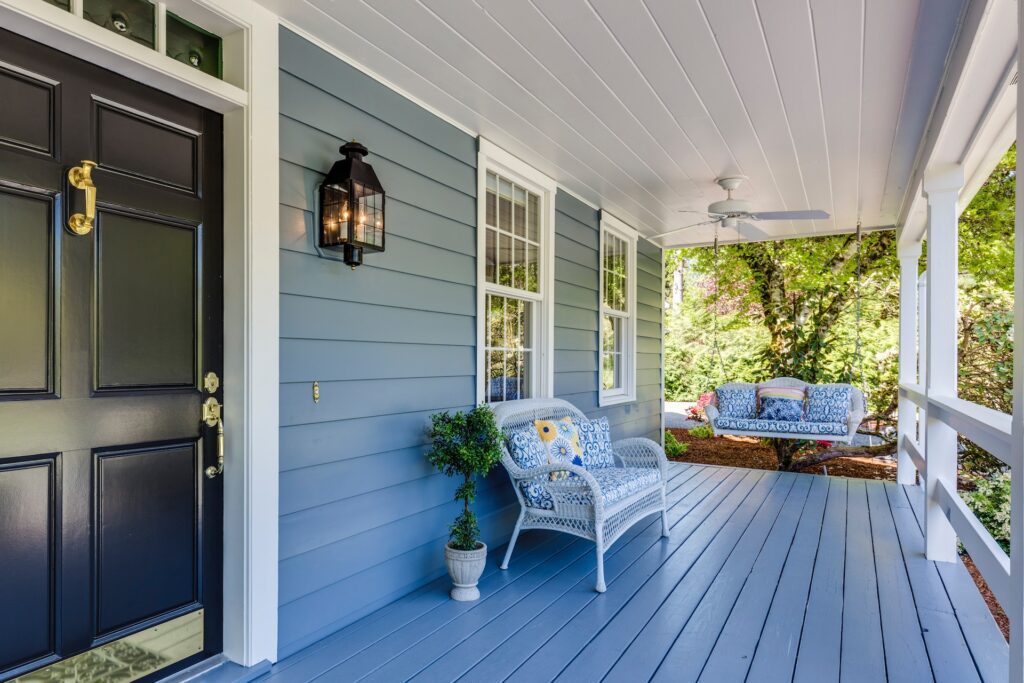
For decades, single-family homes have dominated the American housing market. Today, around 82 million of the 129 million occupied properties are single-family homes. If you’ve been searching for ways to build your retirement income or improve your investment portfolio, consider investing in single-family rental (SFR) properties.
SFR investing involves buying residential homes and earning income from them. Whether renting out a single room or the entire property, this investment allows you to generate cash flow by collecting monthly rental payments. If you already have an investment portfolio, SFR properties can help with diversification. This guide explains everything about single-family rental investing before you acquire your first property.

Understanding Single-Family Rental (SFR) Real Estate
Single-family rental (SFR) investing involves buying and maintaining individual residences that aren’t attached to other buildings. The purpose of these investments is to produce rental income. You can collect monthly tenant payments by leasing part or all of the property. You may also benefit from appreciation, which means that the value of your property will likely increase over time.
Single-family rental investing has become increasingly popular in recent years. During the first three months of 2023, around 27% of all single-family home purchases were made by investors.
Today, investor activity is at its highest in the Sun Belt, a region comprising 15 states. In places like Miami, nearly one-third of all single-family homes were bought by investors in the final quarter of 2022.
Many factors are influencing the growth of SFR as an asset class. For example, the risks of investing in a single-family home are more manageable than buying multifamily properties, and the costs associated with maintaining this property are often reasonable. SFR investing has also become more popular because of the high demand for these properties. Even though interest rates have increased considerably over the last two years, demand is still high, so investors can easily find tenants.

The Evolution of SFR Investing
While investors have been purchasing single-family properties since before the 21st century, the market was shaped by the 2008 housing crisis. In the decade spanning 2006-2016, nearly four million households became renters. Today, SFR properties are the fastest-growing portion of the real estate market.
While prices plummeted during the housing crisis, they have increased consistently since then, which means that people who use this strategy can be confident that their SFR portfolio will perform well in the long term.
SFR investing went through another jolt in popularity following the COVID-19 pandemic. Once the Federal Reserve effectively lowered interest rates to zero in 2020, prospective buyers responded by flooding the market to obtain favorable rates on their purchases. This rapid increase in buyer demand caused property values to rise as well.
The increase in remote work has also driven the surge in SFR investments. Fewer employees are working in a traditional office, which means that they need high-quality housing where they can perform their work. People who are priced out of the market can still live in a single-family home by renting it out.
Opportunities in SFR Investing
Whether you’re an institutional investor or want to add a couple of properties to a portfolio, there are ample opportunities in SFR investing. Remember that around 95% of all single-family properties are currently occupied, so it’s difficult for potential buyers to find the homes they wish to purchase. In this scenario, these people are more likely to rent a single-family home instead of an apartment.
A clear advantage of investing in these properties is that they can generate positive cash flow almost immediately after the purchase. You can use these funds to pay your mortgage and add to your retirement income. Over time, you’ll build property equity, which means you can sell it for a profit.

Advantages of SFR Investing
SFR investing offers many advantages that are more challenging to obtain with multifamily rentals. For example, you can effectively leverage the equity you build up in a single-family property to make additional SFR investments. This strategy is possible with a home equity loan or line of credit. You can use some of the property’s cash flow to buy more properties.
SFR investing is also a great way to diversify your investment portfolio. Real estate investments aren’t correlated with the stock market, which can help you maintain the value of your portfolio when losses occur.
Remember that an SFR investment is most effective as part of a long-term strategy. While you’ll earn monthly cash flow, you’ll also benefit from long-term appreciation. You can use the cash flow to cover some or all property expenses. Appreciation means that the property value will increase consistently. A property you’ve owned for 20 years will likely be worth more than it was after 10 years. Your eventual returns from selling the property depend on how long you own it.
Mitigating Risks
Investing in single-family rentals is an effective method for mitigating risk. Most of your existing investments are in the stock market. While the stock market tends to perform well in the long term, it’s also unpredictable and volatile.
A company with eight consecutive quarters of growth could release a poorly reviewed product or go through a scandal that causes the stock to plummet. In comparison, single-family rentals often increase in value. While it’s possible for a single-family home to drop in value, the inverse is more likely.
When you decide to invest in SFR properties, you can use them as a hedge against inflation and economic fluctuations. When inflation goes up, the value of the dollar goes down. Consumers are wary about spending their money, making company stocks more likely to decline. However, people always need housing, even when inflation is high. Monthly rents are often at their highest when inflation increases.
Tax Benefits of SFR Investing
Two notable tax breaks are available to SFR investors: the capital gains tax and depreciation. While rental cash flow is taxed as ordinary income by the IRS, you won’t need to pay Social Security and Medicare taxes on your SFR income.
If you sell a single-family rental, a capital gains tax will likely be levied against you. This tax is applied to the amount you earn from the home’s sale that’s higher than the original value. For example, let’s say you purchase a single-family rental for $200,000 and sell it five years later for $350,000. The capital gains tax would be applied to the $150,000 difference. If you hold a property for over 12 months, your tax rate will be reduced.
If you lived in a property for at least two of the last five years, you could exclude $250,000-$500,000 in capital gains. Remember that the $500,000 exclusion is only available if you’re married and file a joint return. If you make gains above these exclusions, they will be taxed at the standard rate. Capital gains tax rates vary from 0% to 20%.
As for depreciation, it’s a type of annual tax deduction that you should gain access to once you purchase a property. This deduction applies to the value of the structure divided by the number of years it continues to be helpful. The useful life of a residential property is capped at 27.5 years. During this time, the property’s value will naturally decrease. You can spread your deduction over your following 28 tax returns.

Remote Investing Platforms
Investors most often cite the one drawback of the SFR real estate strategy as the amount of management needed. SFR investors usually need to identify ideal markets for rental properties, manage tenant relations, repair and maintain their investments, and perform ample research. They must also visit the property regularly to handle these tasks, making buying rentals in other states challenging.
However, you can bypass these responsibilities and earn passive income with platforms like Mynd, facilitating remote SFR investing. Mynd maintains a technology-based platform that helps investors locate, purchase, finance, manage, and sell SFR properties remotely. By taking advantage of the on-the-ground expertise and comprehensive data analytics that Mynd provides, you’ll gain access to streamlined property management and more diverse markets that offer the highest returns.
Conclusion
SFR investing allows you to protect against inflation, earn consistent cash flow, and avoid volatile investments. Look for cities with reasonable property values, strong job markets, and growing populations. Explore SFR investments if you want a viable solution for portfolio diversification and wealth creation.